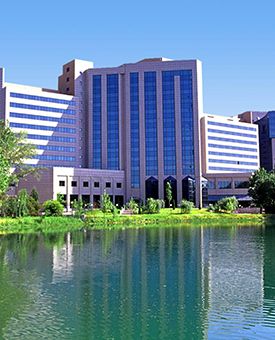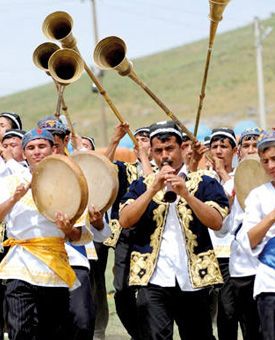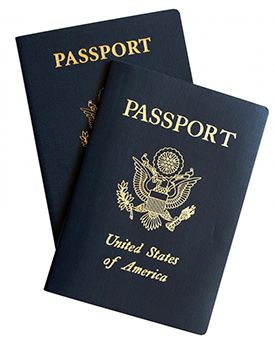National cuisine
Uzbek cuisine is particularly distinctive and developed aspect of Uzbek culture. Unlike its nomadic neighbors, the Uzbek people have had strong and settled civilization for many centuries. People grew wheat and bred the cattle between the deserts and mountains, in oasis and fertile valleys. As a result, abundant products allowed the Uzbek people to express the unique hospitality tradition that, in turn, enriched their cuisine.
Seasons. Especially winter and summer affect the structure of main menu. Fruits, vegetables and nuts are available everywhere during summer. Fruits in Uzbekistan grow in abundance - grape, melons, water-melons, apricots, pears, apples, quince, persimmon, cherry, pomegranates, lemons, figs. Vegetables are also diverse, including some less known varieties of green radish, yellow carrot, gourd family in addition to regular eggplants, bell peppers, turnips, cucumbers and juicy tomatoes.
Winter diet traditionally consists of dried fruits and vegetables and preserved products. Pasta and pasta type dishes are also usual meals during cold seasons.
Mutton is generally preferred source of proteins in Uzbek cuisine. Sheep are valuable not only for their meet and fatty tail (source of fat in culinary), but also for their wool. Beef and horse-flesh are also used for meal in substantial amounts. Camel’s and goat’s meet are less widespread.
Uzbek meals are not very hot by taste, though they are very spicy. Some spices used in meal preparation are caraway, red and black pepper, barberries, coriander and sesame seeds. Most popular herbs include the parsley (fresh coriander), dill, celery and basil. Other spices include vinegar which is added separately to salads, and marinades and yogurt products. Variety of bread, unleavened and short, is the main element in meals for the major part of population. Flat bread or naan is usually baked in clay ovens (tandoors)and served with tea, not mentioning each separate dish. Some types of flat breads are baked with onion or meet baked in the pasta, others are covered with sesame or kalonji seeds.
Central Asia is famous for availability of various and delicate yogurt products. Katyk or yogurt made of sour milk, and suzma - melted thick milk similar to cottage cheese are the most famous ones. They are usually served separately, in salads or are added to soups and main courses, and this gives the latter the unique and amazing aroma.
Palov (Uzbek version of pilaf) is the leading dish of Uzbek cuisine. It mainly consists of fried meet, onion, carrots and rice with addition of raisins, barberries, yellow peas (nohat) and (or) fruits. Uzbek men are proud of their mastery to make the most unique and wonderful palov. Oshpaz of chef often cooks palov on open fireplace in a separate kazan (cauldron). On holidays or special occasions, for example weddings, more than 1,000 people may try palov. Indeed, years of practicing is required for perfect cooking this dish which sometimes contains more than 100 kg of rice.
Tea as a ceremony is one of the most beautiful oriental traditions. Tea is offered first to any guest, and there is additional set of customs including preparation, suggestion and consumption of tea. Green tea is predominant and is the hospitality drink. Black tea is preferred in Tashkent. Both types of tea are sometimes served with milk, more often with sugar. Tea drinking ceremony in Uzbek cuisine also includes the consumption of dishes such as samsa (flaky pies), flat breads, khalva and various fried and baked products.
Choykhona (tea house) is an important part of traditions of the Uzbek society. Always located in shady places, preferably, situated near the calm water spring, choykhona is the place of meetings for social interaction, communication and brotherhood (friendship). Uzbek men gathering around the low tables put on the trestle-beds (special beds with fences) decorated with ancient carpets, enjoy the amazing palov, shashlik (shish kebab) and unlimited cups of green tea.












 Kazakhstan
Kazakhstan Kyrgyzstan
Kyrgyzstan Tajikistan
Tajikistan Turkmenistan
Turkmenistan Uzbekistan
Uzbekistan